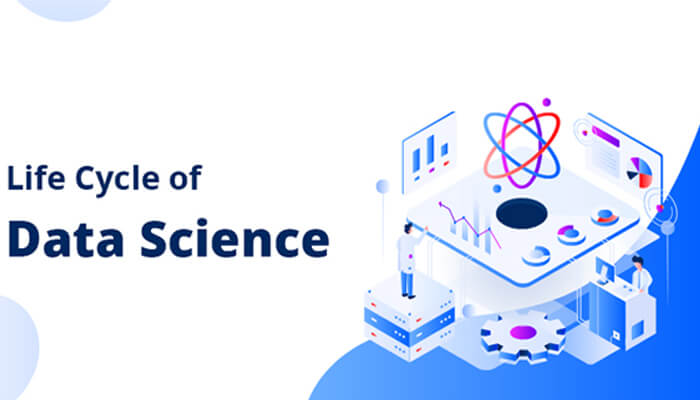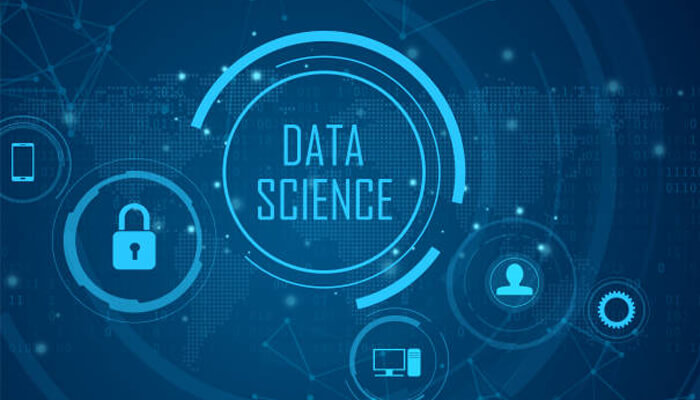A burgeoning subject of research called data science has several facts including the study and analysis of massive amounts of data. As well as the fact that its branches go into practically every area of study. Understanding the intricacies of the Data Science Life Cycle is crucial for expertise in this field. Enroll in our Data Science Certification course.
Work with elaborate data that is organized on several levels and is not streamlined. Statistics, arithmetic, and computer languages are the three fundamental building blocks on which data science is built.
Data are needed for every component of a fraternity. Business, the health sector, science, daily life, marketing, and research—to advance the movement. Our lives have been completely taken over by information technology. Computer science which is evolving at such a rapid pace and in so many different directions that the operating methods tactics applied just a few years ago are now no longer relevant.
The same holds accurate difficulties and issues. Due to their increased complexity, the issues and worries from the past over a certain subject, ailment, or shortcoming might not apply now.
Therefore, to stay up with the difficulties of today and the future as well as to find answers to unresolved issues, any field of science, study, or organization requires the latest collection of operational techniques and systems.
What do you mean by Data Science?
To confront analytically challenging issues, data science involves a fusion of technology, algorithm development, and data inference.
Data is the foundation. There are enormous quantities of unprocessed data coming in and being kept in company data warehouses. We can compose advanced capabilities using it. Data science is essentially about finding innovative methods to use this data to produce economic benefits.
For a visual explanation do have a look at our Data Science Course video.
Who is a Data Scientist? And what does he do?
You might get 20 different answers to that question. If you query 20 different data scientists. That’s because a data scientist’s functions and duties may vary widely. Based on a range of elements such as industry, experience, and the structure of the organization they work for.
All data science positions have a few characteristics, though. Additionally, you should be aware of the traits that all data scientists share if you’re getting ready for a job interview as a data scientist.
Lifecycle of Data Science
Since the phrase was first used in the 90s, data science has advanced significantly. Experts follow a predetermined structure while addressing a data science topic. Project execution in data science has virtually become an algorithm.
The temptation to forego the approach and begin problem-solving is all too common. However, by neglecting to provide a strong basis for the entire effort, doing so invalidates our greatest intentions. Contrarily, according to the instructions typically results in us becoming closer to the issue we’re seeking to address.
Let’s get to the points of the Data Science Lifecycle.
1. Business Knowledge
The focus of the complete cycle is the company’s objective. What would you fix when the particular problem has been resolved? It is essential to comprehend the company target since it will establish the ultimate goal of the investigation.
We cannot choose an evaluation’s particular target that is in line with the company goal until we have a positive opinion of it. You must understand whether the client wishes to predict commodities prices, cut down on savings losses, etc.
2. Data Expertise
This is a list of every piece of data that is accessible. Because they are familiar with the information that is now accessible, the facts that need to be implemented to this management issue, and other pertinent information, you must work closely with the organization’s group in this situation.
The data, along with their structure, relevance, and record type, are described in this stage. Graphs should be used to examine the data. It simply involves searching through the data and obtaining any knowledge you can about information.
3. Data Preparation
The next phase is data preparation. This involves choosing the appropriate information, integrating it by fusing large datasets, cleaning it, handling attribute data by either separating them or attributing them, handling inaccurate data by obfuscating them, looking for anomalies with scatterplot and handling them, and making new information by deriving individual modules from old ones.
Create the proper structure for the data and remove any extra columns and features. The most important phase of the existence cycle is data preparation, which takes place the night before bed. Your model is as thorough as your data.
4. Analyzing Exploratory Data
This phase requires comprehending the answer and the variables impacting it before creating the real model. The distribution of data among various character-related criteria is graphically analyzed using bar graphs.
The correlations between various factors are visualized using frequency distributions and warming maps. The identification of each feature both alone and in combination with other factors makes heavy use of a variety of data visualization approaches.
5. Data Science – Analyzing Data
Data modeling is the pulsating center of data analysis. The sorted data are entered into a model, which outputs the intended outcome. Depending on whether the problem is one of categorization, regression, or clustering, this phase entails picking the right model type.
Among the different algorithmic techniques that make up the model household we have chosen, we must carefully choose the methods to enforce and implement them.
We must modify the weights and biases of each model to achieve the desired performance. Furthermore, we need to make sure that performance and generalizability are properly matched. The model shouldn’t longer evaluate the data and perform poorly on fresh data.
6. Model Assessment
This analysis determines if the model is ready for deployment. The model is evaluated utilizing a set of carefully chosen assessment measures and tested using fictitious data. We must also make sure the model accurately depicts reality. To get the necessary level of metrics, we must redo the modeling procedure if the assessment does not produce a high-quality result.
Like a person, each data science approach or algorithm for machine learning has to evolve, get better with fresh information, and adapt to a new assessment standard. We can develop several models for a particular occurrence, but many of them can be erroneous.
7. Data Science – Version Deployment
After a comprehensive analysis, the prototype is completely implemented in the selected structure and channel. It is important to give serious thought to each step of the mentioned data science service conditions. The entire plan will be squandered if one stage is carried out improperly since it will affect the next.
For instance, incorrect data creation will result in the loss of information and the inability to build an ideal model. If the data is not correctly cleansed, the classifier will cease operating. The model won’t work in the actual world if it isn’t thoroughly assessed.



